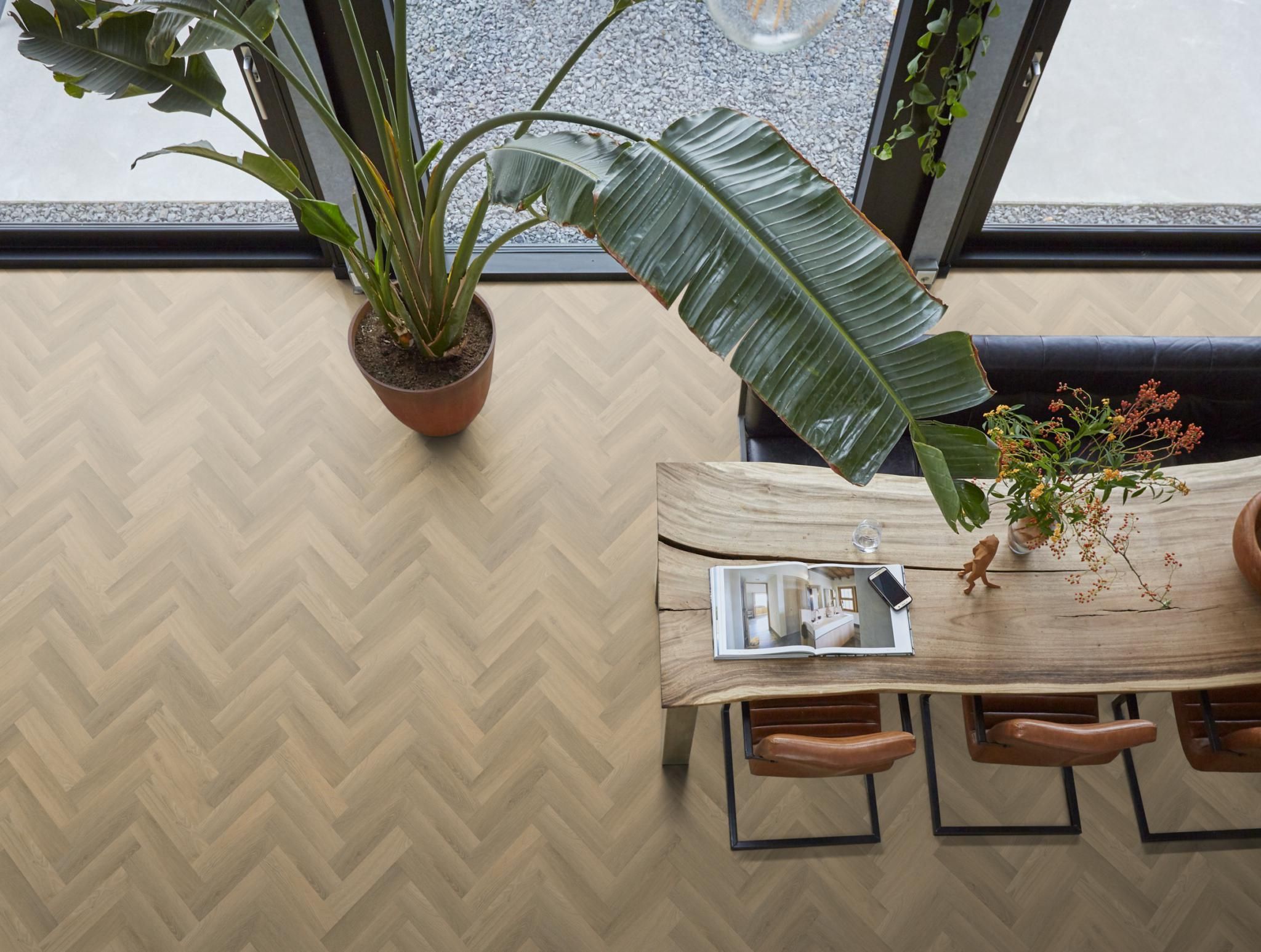FAQ
Collapsible content
What is the difference between a PVC floor and a traditional floor?
Unlike a normal wooden or natural stone floor, a PVC floor consists of several layers that together form a lifelike imitation of the chosen material.
The Supreme wear layer is the top layer of the PVC floor and can have different designs and textures, such as wood or stone imitations. Under this layer is another print layer of PVC with the desired material, with possibly an extra thick PVC layer for sound dampening.
This makes PVC look just like real traditional concrete or wooden floors, while it is cheaper and easier to install!
What are the advantages of a PVC floor?
PVC flooring offers many benefits, including durability and resistance to common forms of wear and tear, such as scratches and stains. It is easy to clean and maintain, usually requiring only a simple sweep or mop to keep it clean.
In addition, they offer a comfortable and quiet walking experience, as well as heat insulation. These floors are water-resistant, making them an excellent choice for humid areas such as bathrooms and kitchens.
Our collection of PVC flooring offers a wide range of styles, colours and patterns, making it easy to match different interior designs. They can even mimic the look of more expensive flooring, such as wood or stone, at a fraction of the cost.
How environmentally friendly are the PVC floors from our collection?
A floor is for living on. Of course you want it to be safe as well as practical and comfortable. We at PuurPVC also find sustainability very important, which is why we chose to include Floorlife PVC floors in our range. Because Floorlife also attaches great importance to your health and the environment. That is why Floolife PVC is completely phthalate-free and provided with organic plasticizers. This way you can be sure that there are no polluting raw materials in your floor.
Phthalates are plasticizers that are added to a plastic product to make it flexible. The danger lies in the release of the plasticizers, which are harmful to our health. Phthalates do not remain locked in the plastic, but spread and end up in the environment.
Can a PVC floor withstand a beating?
Do you have a busy household? Then we can well imagine that you would like to purchase a floor that can withstand a knock. This way you do not have to worry about a spilled glass of drink or your children's toys on the floor. A PVC floor from Floorlife is the perfect solution. Our PVC collection is water-resistant, hygienic and easy to maintain. Vacuuming and mopping with a damp cloth is enough to get your floor spotlessly clean.
Are PVC floors scratch-free?
PVC floors generally have a high degree of scratch resistance, but the level of scratch resistance can vary depending on the quality of the PVC material and the finish of the floor. In general, PVC floors have a better scratch resistance than, for example, laminate or wooden floors.
An important factor that contributes to the scratch resistance of PVC floors is the top layer, which is usually made of polyurethane (PU). The thickness and quality of the PU layer can vary and partly determines the scratch resistance of the floor. With high-quality PVC floors with a thick, strong PU layer, the floor will show scratches and wear less quickly than, for example, a cheaper PVC floor with a thinner PU layer.
However, it is important to note that no floor is completely scratch-proof. Even the strongest and most expensive PVC floors can be damaged by, for example, sharp objects, heavy objects falling on the floor or sliding heavy furniture. Therefore, it is important to take the right precautions to prevent scratches, such as using felt pads under furniture, avoiding wearing shoes with sharp heels and regularly maintaining the floor to keep it in good condition.
In short, although PVC floors are generally very scratch resistant, it is important to look at the quality of the floor and the top layer to provide the best protection against scratches and wear
Do PVC floors contain plasticizers?
PVC flooring is popular for its durability and easy maintenance, thanks to the use of plasticizers such as phthalates, adipates and trimellitates. Although some people are concerned about the possible health effects of plasticizers, all our floors are phthalate-free and made with 100% organic plasticizers.

